DC sent along a lovely pack of review copies for Villains Week, and I feel like it’s only fair that I read through all of the ones out this week and review ’em. I’ll go from my least favourite to my favourite, ending with my favourite of this first lot. And hey! If DC send along a second selection next week, I’ll review those ones too!
Slight spoilers below, but nothing particular.
One thing that you should note is that some of the comics take place as part of Forever Evil – the Batman and Flash comics, it seems – whilst the Green Lantern/Superman issues are more general. So if you pick up Poison Ivy or Grodd, it’ll make reference to two of the more immediate moments which occur in Forever Evil #1. Keep that in mind as you buy the comics – they’ll all make sense, but some will be directly following on from the main story whilst others are unconnected origin stories.
Desaad
Paul Levitz (w), Yildiray Cinar (a), Jason Wright (c), Carlos M. Mangual (l), Anthony Marques, Mike Cotton (e)
I’m astonished this issue was made. Impossible to understand as a standalone story, it features a sequence about a mass shooting which is in extremely poor taste. The rest of the comic doesn’t explain who Desaad is or what’s going on, and is filled with concepts and ideas which are neither fleshed out nor coherent. The art tells the story – what little there is – well enough, but there are some dodgy character designs going on. I didn’t care at all about Desaad by the end of the issue.
Relic
Robert Venditti (w), Rags Morales (a/i), Cam Smith (i), Andrew Dahlhouse (c), Dave Sharpe (l), Chris Conroy (e)
There’s an interesting story in here somewhere, but the artistic choice made here turns an origin story into a complete chore to read. Every page is a splash page from Rags Morales, and he chooses some absolute clunkers. The first page shows a pretty galaxy with an arm floating into the left frame. What’s going on? Who knows. It’s boring.
Morales doesn’t make any of the concepts in Venditti’s script work, and his character designs are uninspired and uniform. Andrew Dahlhouse does his absolute best to clean up this mess, but it’s a lost cause. I can see that Venditti’s story would be interesting, if only the comic had been told sequentially instead of as a series of misconnected splash pages.
Joker
Andy Kubert (w), Andy Clarke (a), Blond (c), Jared K. Fletcher (l), Katie Kubert (e)
As you might expect, there’s really no reason to try and offer any backstory to The Joker. This issue tells a nonsense side-story from some point in Joker’s past, during which he has some flashbacks to his childhood. Really, any attempt to flesh out the past of the character is always going to flop – the more we know about Joker, the less interesting he is. As a result, the issue flails with an un-involving main story which bombs the final gag, and flashbacks which take away from the story entirely.
Andy Clarke’s artwork is lovely, as always, although the weak script means it’s very difficult to determine how some scenes are meant to be interpreted. There looks to be some intent at offering a subtext, but this is only conveyed in the art and not the script. It seems as though one of the supporting characters is secretly working at a cross-purposes, but there’s only so much the art can do without clear dialogue. Clarke attempts to elevate a completely throwaway storyline, but can only offer a very pretty, very weak, story.
Grodd
Brian Buccellato (w), Chris Batista (a), Tom Nguyen (i), Wes Dzioba (c), Wes Abbott (l), Kyle Andrukiewicz, Joey Cavalieri (e)
Grodd’s a curious character. The main reason he exists as a villain is because gorillas are scary, I guess? This is an issue which struggles because the character comes into this issue with a goal that doesn’t make any sense. Every single character in the comic calls him out for his strange decisions and ambition, and he basically hits them until they give up trying. Does it forgive a strange character if every other character CALLS him strange? I’m not sure on that.
Chris Batista, to me, is one of those artists DC have never appreciated quite enough, and his work here is really good fun – not everybody can draw an expressive gorilla. Not a bad issue by any means, but one which doesn’t manage to quite fix the character.
Cyborg Superman
Michael Alan Nelson (w), Mike Hawthorne (a), Daniel Brown (c), Carlos M. Mangual (l), Rickey Purdin (e)
Interesting, this one. It’s going to upset fans of the character, but tells a reasonably involving story. Framing two sequences against one another, the final few twists are very obvious, although Nelson mines from really fun laughs from Cyborg Superman’s sadistic quest for a sidekick. I don’t know how this actually fits in with established continuity – it would seem to wreck Green Lantern’s past storylines, for example – but we’ll have to see. It’s a perfectly fine comic, and Hawthorne’s art is like somebody put Jamie McKelvie and Stuart Immonen’s art in a blender. Good, in other words.
Two Face
Peter J. Tomasi (w), Guillem March (a), Tomeu Morey (c), Dezi Sienty (l), Darren Shan, Rachel Gluckstern (e)
Featuring an astonishingly drawn and coloured opening sequence between Two Face and Scarecrow whilst both are stood ON the Bat-Signal, the issue sadly then moves into familiar territory for the rest of the issue. Morey’s colouring is spectacular though, especially in the early stages of the issue. At first it feels like there’s a definite plan for the issue, until the story turns into a typical Two Face/anti-hero narrative. There’s nothing especially new here, especially for those who have read No Man’s Land and other stories where Two Face similarly has no Batman opposing him.
It’s entertaining, but it also feels like Tomasi is killing time for the last half of the page-count. There’s some good puns about duality, though, which is half the battle in a Two Face story.
Bizarro Superman
Sholly Fisch (w), Jeff Johnson (a), Andy Smith (i), Javier Mena, Jordie Bellaire (c), John J. Hill (l), Ricky Purdin (e)
This is actually a Lex Luthor story, and it follows familiar ground in an entertaining way. No other character in comics quite has that mix of ambition, arrogance and disregard that Luthor has, and Fisch nails the character. Bizarro Superman himself is a strange creature in the comic – his arc is obvious from the moment he appears. Interestingly enough, Bizarro at no point takes on the design he has in the cover – this is a step far removed from the ‘classic’ rendition of the character.
But despite the by-numbers nature of the narrative, the creative team fit enough touches of silliness and character into the story that the comic works very nicely indeed. I was surprised to find I enjoyed the comic so much, but it was a really solid issue.
Ventriloquist
Gail Simone (w), Derlis Santacruz (a), Karl Kesel (i), Brett Smith (c), Dave Sharpe (l), Katie Kubert (e)
Very much in-tone with her run on Suicide Squad, Gail Simone’s story here puts focus on different mindsets of villainy. One thing the writer has excelled at recently has been creating villains who do evil acts no other villain would do – her Deadshot felt like a unique person rather than a sarcastic goon with a gun, and she’s created some of the most genuinely unsettling villains of the last few years. So it is again with Ventriloquist, which focuses on the second iteration of the villain, Shauna Belzer.
Carefully told, even if it does require a rather large suspension of disbelief towards the end, the story gives us a version of the characters – both ventriloquist and dummy – which keeps readers surprised and unprepared for what might happen next. And when Simone does leave a blatant piece of foreshadowing in the story, she does it to drum up tension and let readers stay one step ahead of the characters. It’s a well-done story, which takes an (probably rightfully) underused villain and give them a bit of purpose and character. It might be deeply silly, but there’s a deadly slice of horror tucked away in there too.
Count Vertigo
Jeff Lemire (w), Andrea Sorrentino (a), Marcelo Maiolo (c), Rob Leigh (l), Harvey Richards, Will Moss (e)
A considered and underplayed issue, Green Arrow’s team make the most of this opportunity to build up one of the character’s most famous villains. Despite a slightly silly design, the character gets a much-needed redevelopment and sense of purpose which feels genuinely menacing. This doesn’t feel like a villain who is insane, but rather a methodical and calculated man who realises that breaking a moral code is preferable to getting left behind.
Sorrentino and Maiolo do some more wonderful work on the issue, continuing their incredible run of form. Sorrentino is the most distinctive and impressive artist at DC, and creates a wonderful sense of space in his work. On one page, for example, he breaks the story into ten page-width boxes, but without any of them feeling cramped on unintelligible. He does masterful work with POV framing, as well – he has an innate sense of perspective which makes it feel as though we’re looking directly out the eyes of the character, without things seeming like they’re overly-crafted and false.
It’s a very very strong issue indeed. Lemire unfolds an inevitable story as his own leisure, and leaves us with the indelible impression that Count Vertigo just became one of DC’s finest.
Poison Ivy
Derek Fridolfs (w), Javier Pina (a), John Calisz (c), Taylor Esposito (l), Kyle Andrukiewicz, Joey Cavalieri (e)
Like with the Two Face issue, this is an exploration in what Poison Ivy does when Batman isn’t around. And again, it’s basically what happened in No Man’s Land. The creative team manage to spread that idea out, however, and fill in some great details about the character and her origin. Also, there’s something quite enjoyable about seeing the character cut loose and have fun, because unlike most other Batman villains, her goal is philanthropically sociopathic. Fridolfs details how her ambitions are almost-so-close to being understandable, and Kalisz’ colours actually go a long way towards aiding that.
In the flashback sequences his colours highlight the character as a total innocent, in bright, warm pastels which makes the reader feel empathetic to her. Pina’s artwork is also excellent, presenting the character over the years as she ages – young and adult Ivy look like each other. I have a soft spot for the character, but the issue doesn’t rest on that hope. Instead, it offers a coherent origin story which binds the character’s personality together and leaves her in a stronger position than before.
Darkseid
Greg Pak (w), Paulo Siquiera, Netho Diaz (a), Hi-Fi (c), Dezi Sienty (l), Anthony Marques, Eddie Berganza (e)
The best issue so far, and likely to be the best of the initiative in general. Greg Pak offers us a talking Darkseid who earns his position as villain #1 in the DC universe. He’s scary and performs crazy, ambitious feats. What’s most notable is how Pak seeds his own just-started stories into the first Justice League story Geoff Johns wrote in the New 52 – it feels seamless and goes a very long way in fixing the problems many readers had with that first story.
A brilliant showcase for Darkseid as a villain, the issue is big and grandiose, explains who he is and why he does what he does, and makes the reader eager to read more Darkseid stories in future.
As I mentioned it in the Joker review, I should also mention it here – it’s a bit strange reading a Darkseid origin story. At the same time, so far in the New 52 Darkseid has been a bit rubbish… so I’m really just happy that the issue deals with him, gets it out the way and pushes the whole thing forwards.
Siquera, Diaz and Hi-Fi offer distinctive, eye-popping visual images whilst letterer Dezi Sienty handles the Kirby-esque dialogue with consummate ease. The ideas presented here could look silly and ridiculous, but for the intervention of Siquira and Diaz as artists. They handle everything thrown at them and turn it from nonsense into a believable (if strained) reality. If there’s one villain issue to pick up – it’s this one, for my money.
And here’s some numbers:
* five of the books are origin stories set primarily in the past
* six are set in the ‘present’ day, after Forever Evil #1
* three of them do not feature the ‘origin’ of the character profiled
* two books have a completely different character in the starring role, rather than the original pre-52 character
* four of the characters have a backstory of familial abuse/murder
* Batman, Superman, Darkseid, Count Vertigo, The Cyborg (Superman) and Desaad all get ‘created by’ credits.


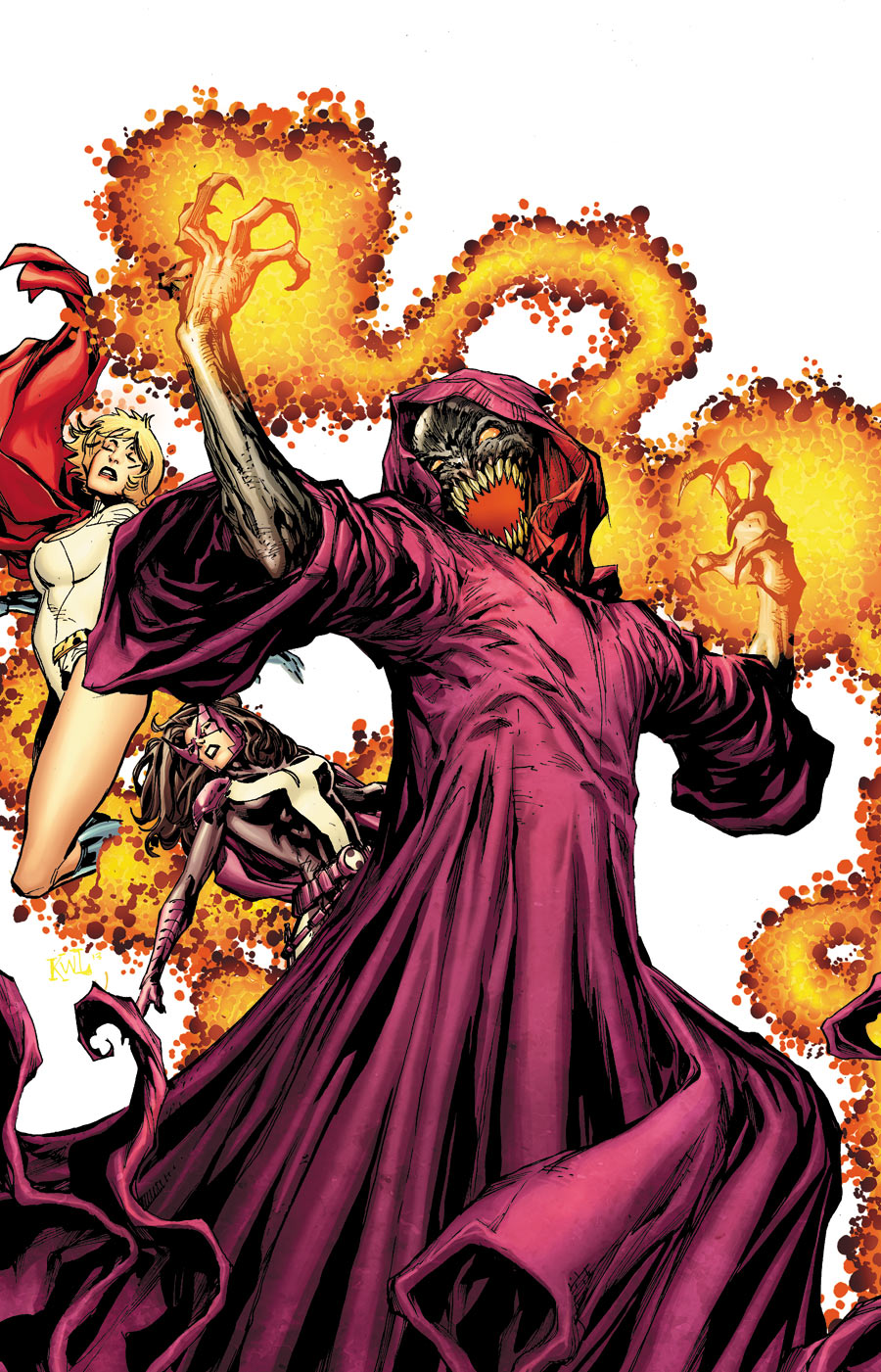
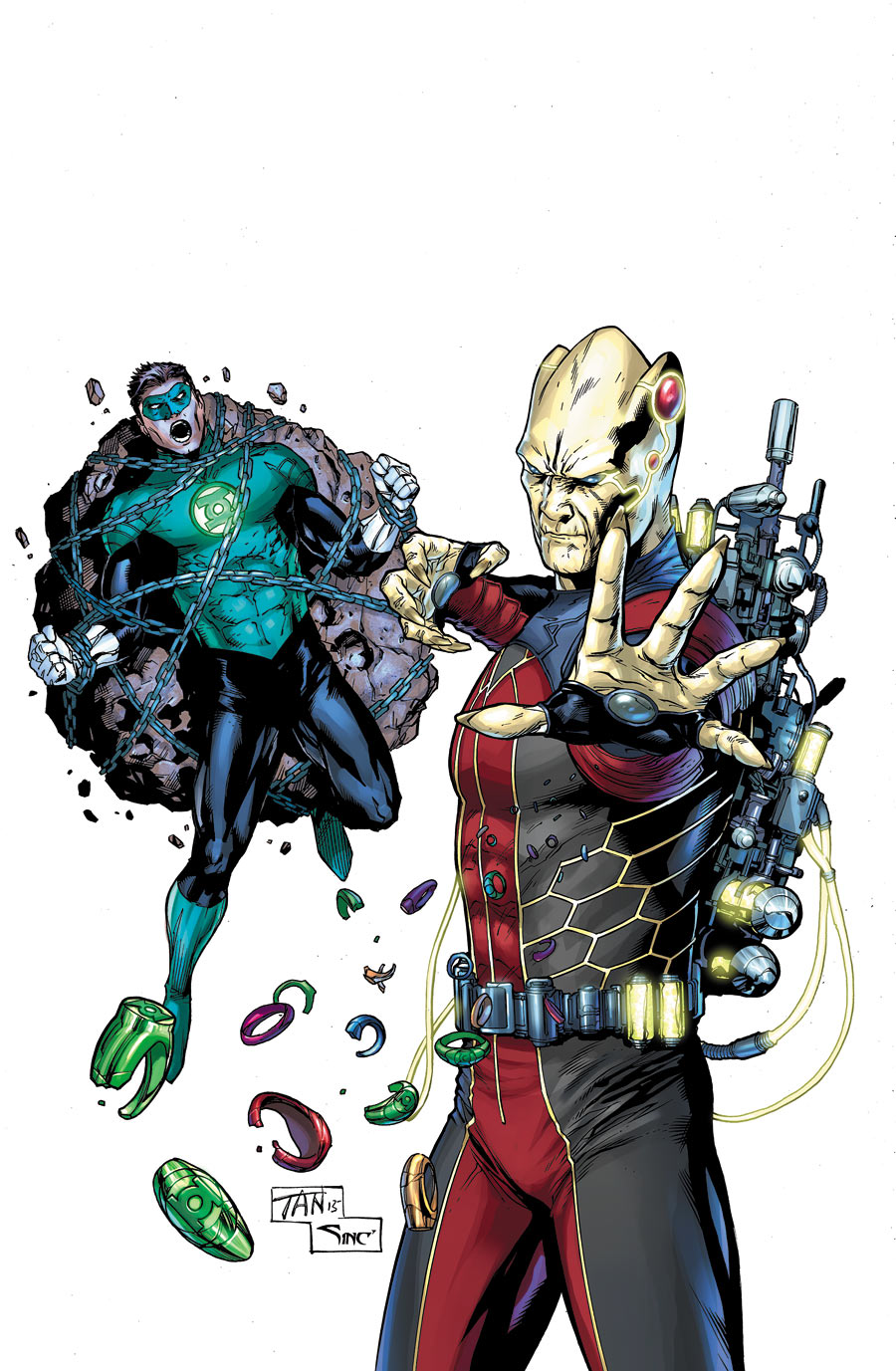
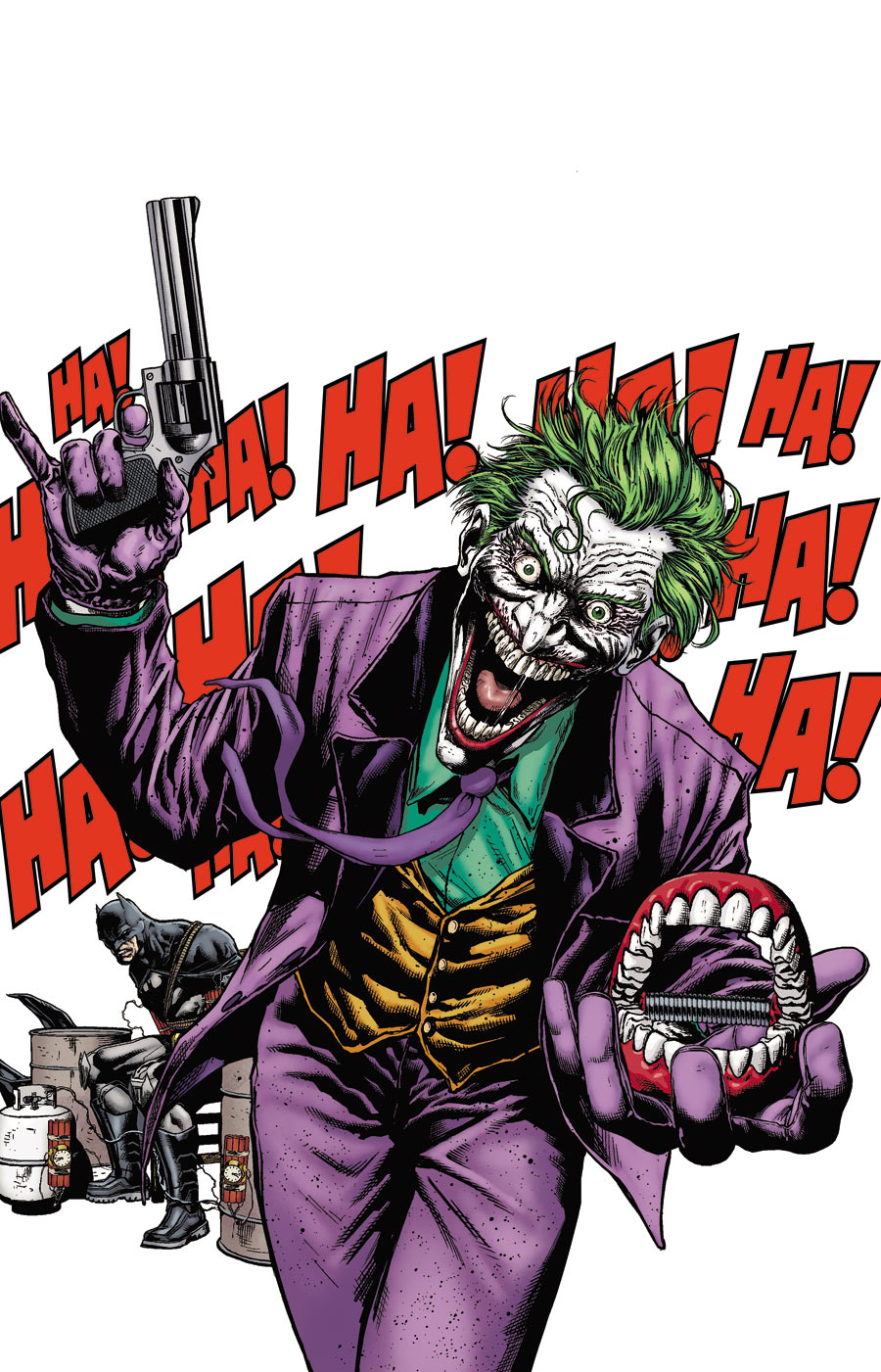
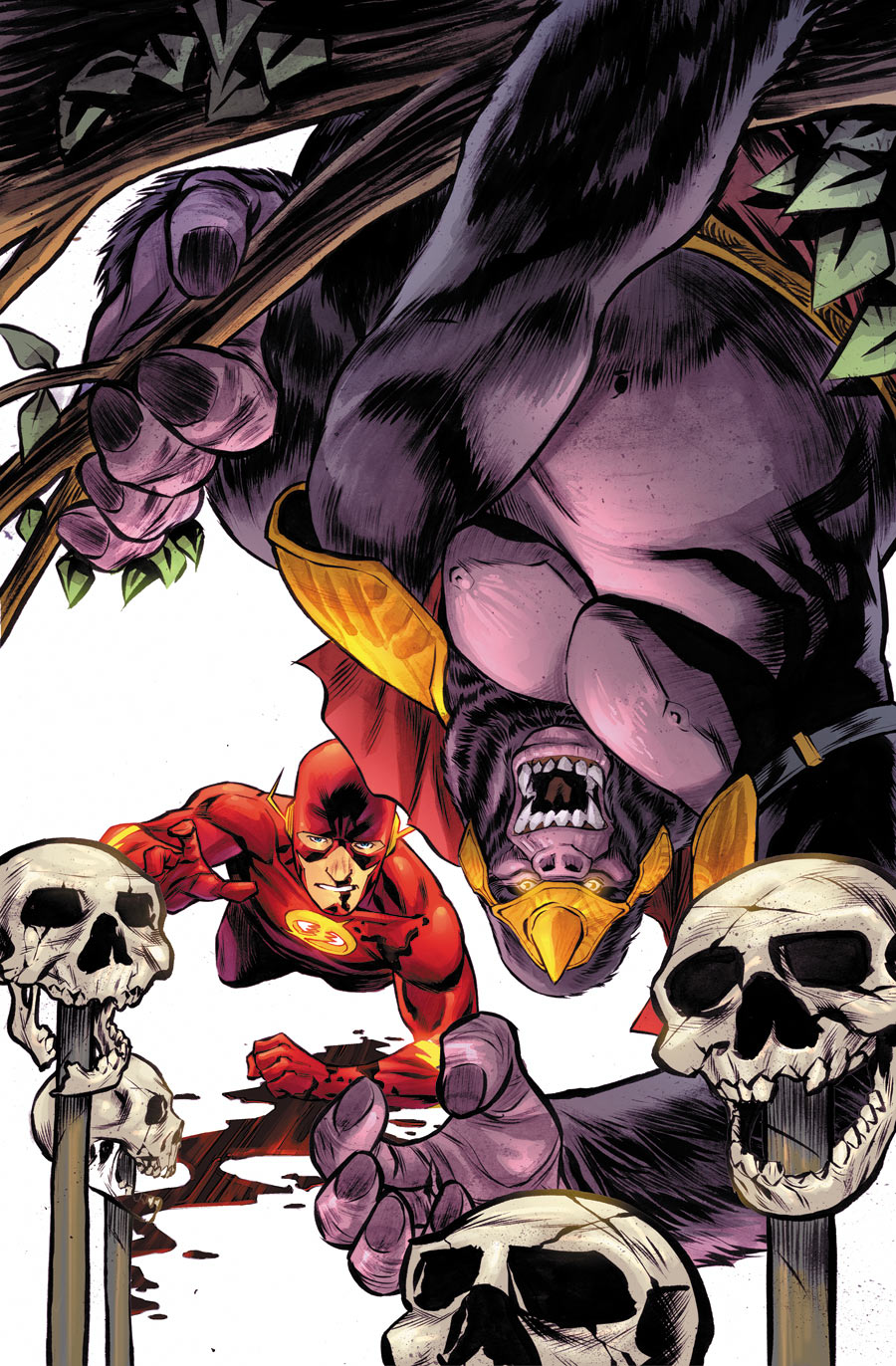
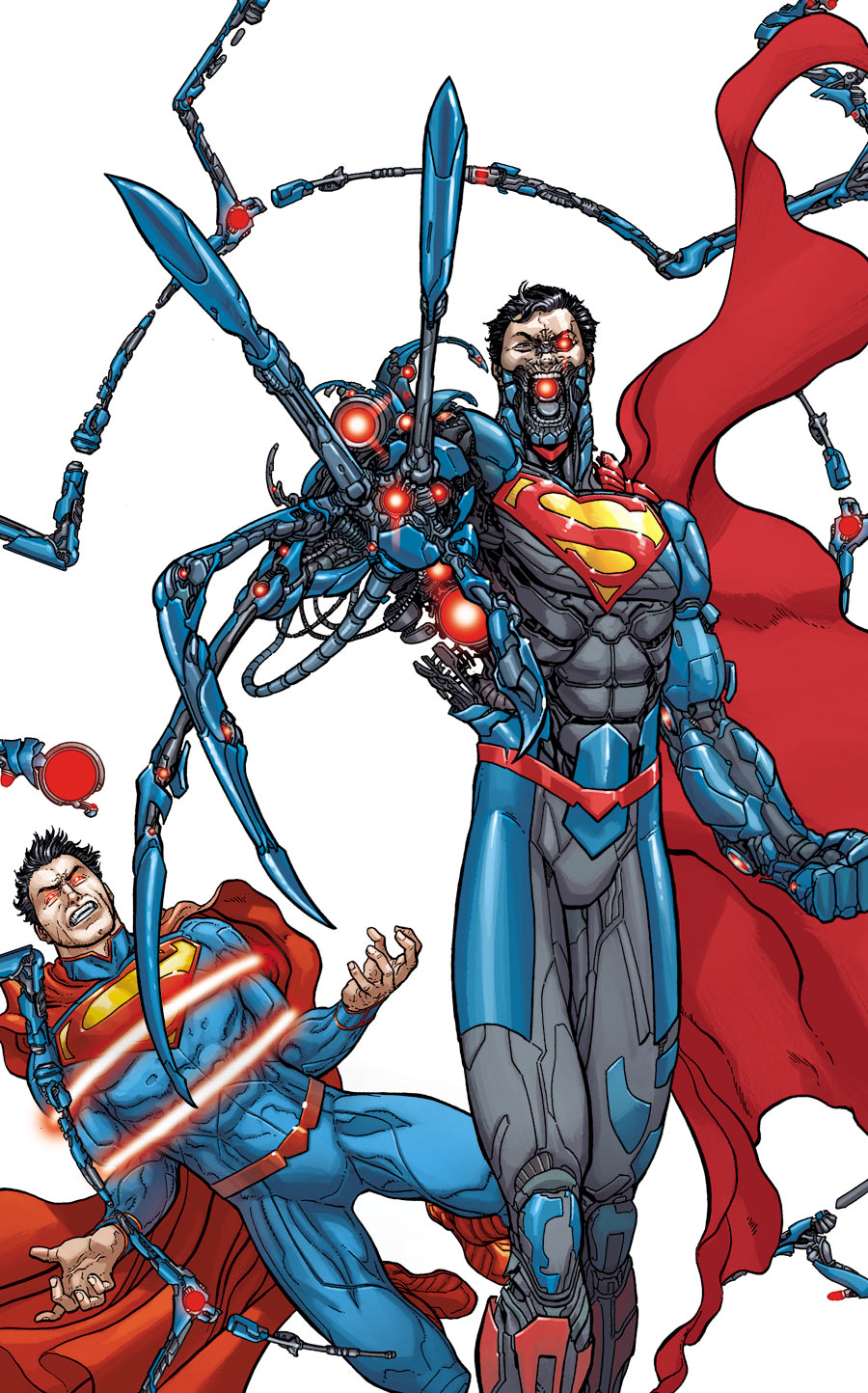
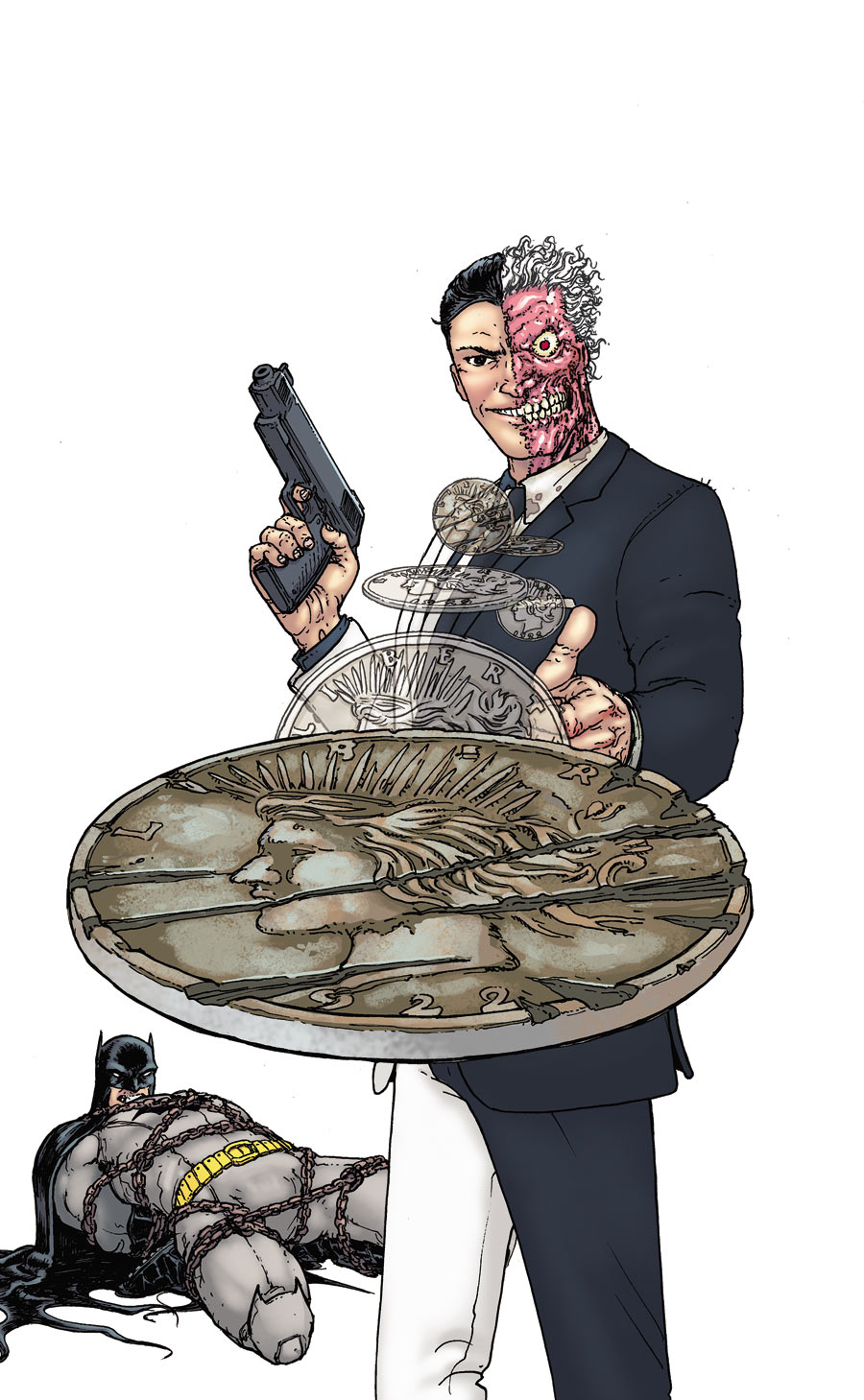
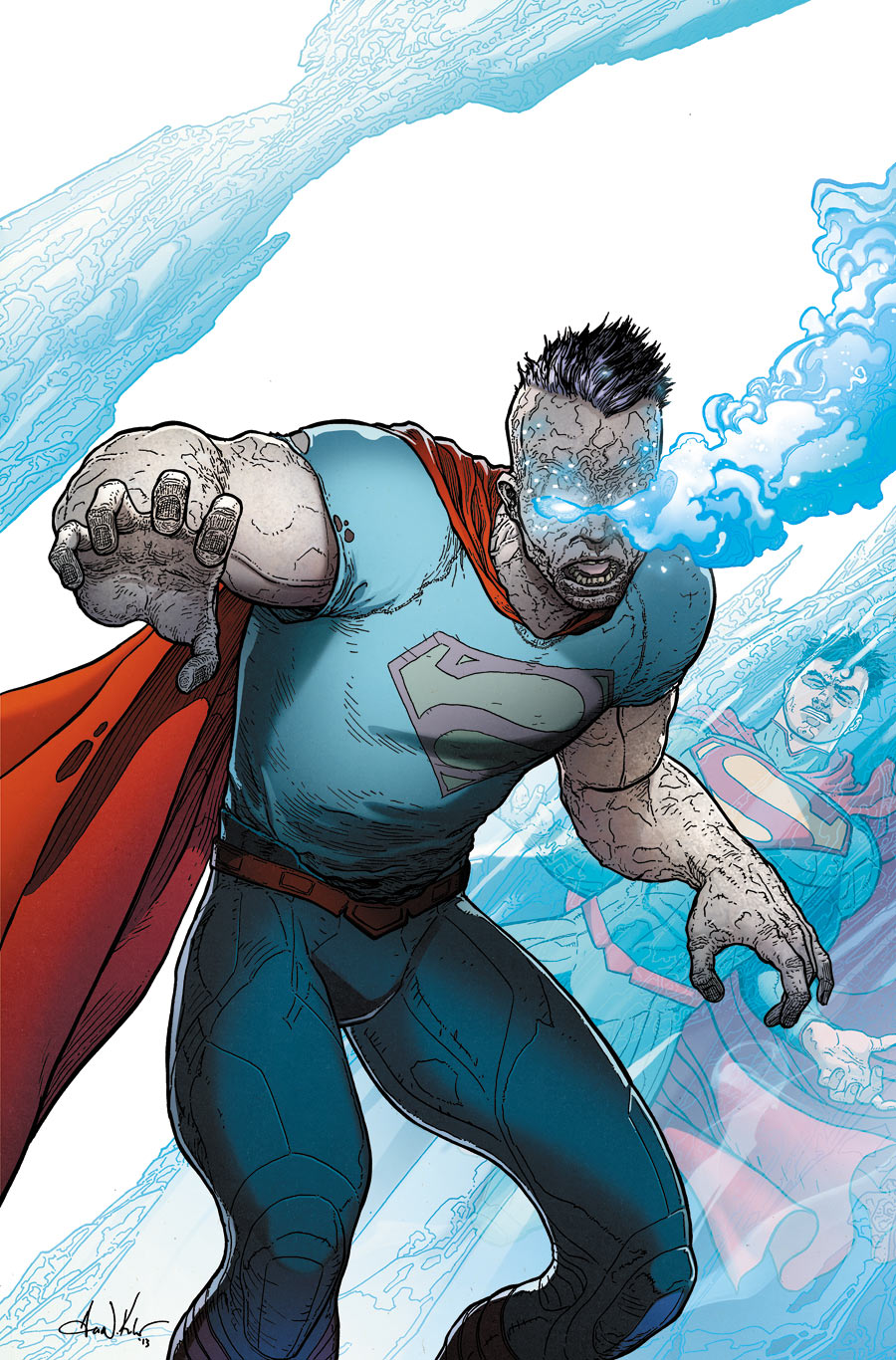
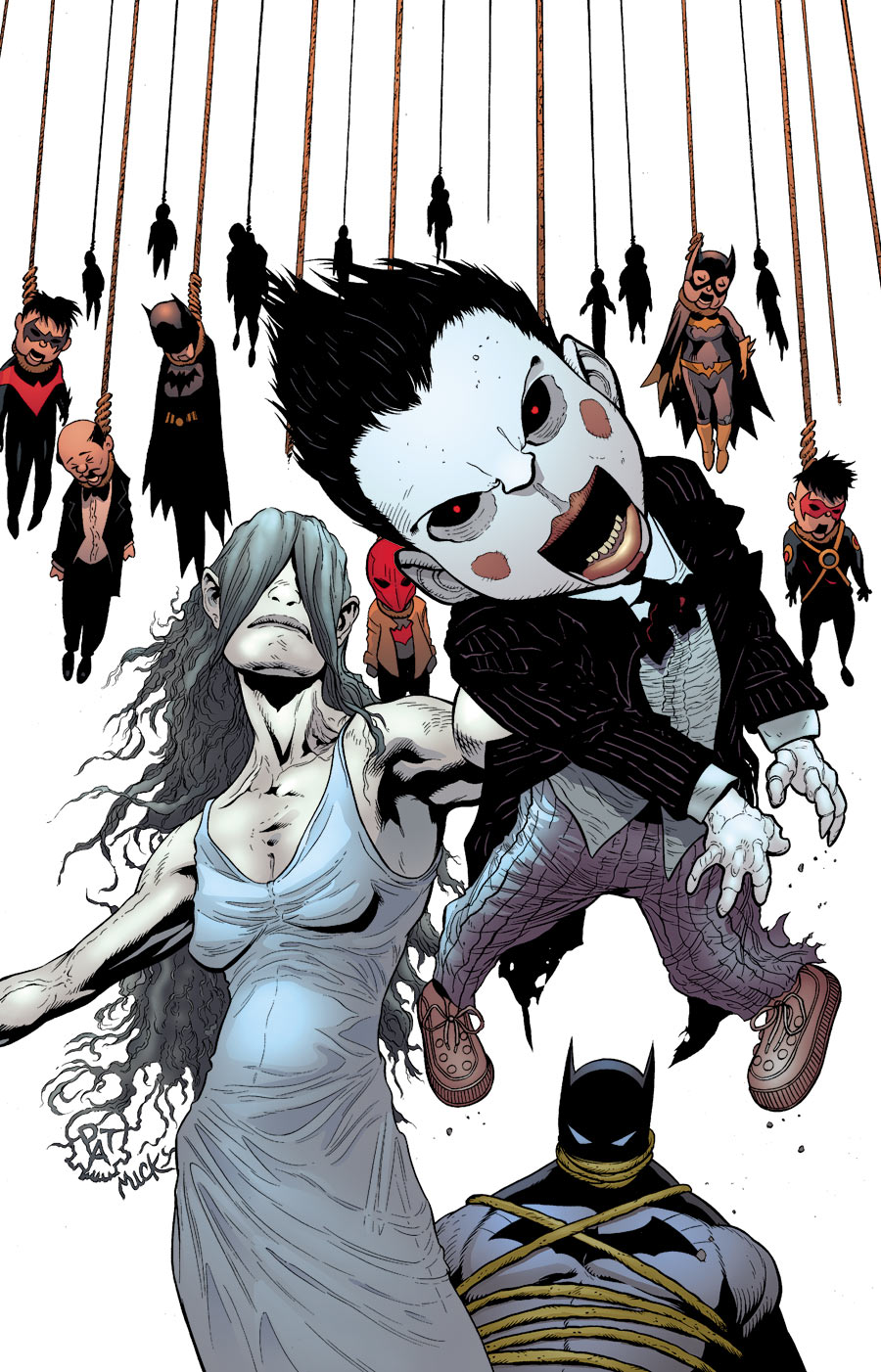
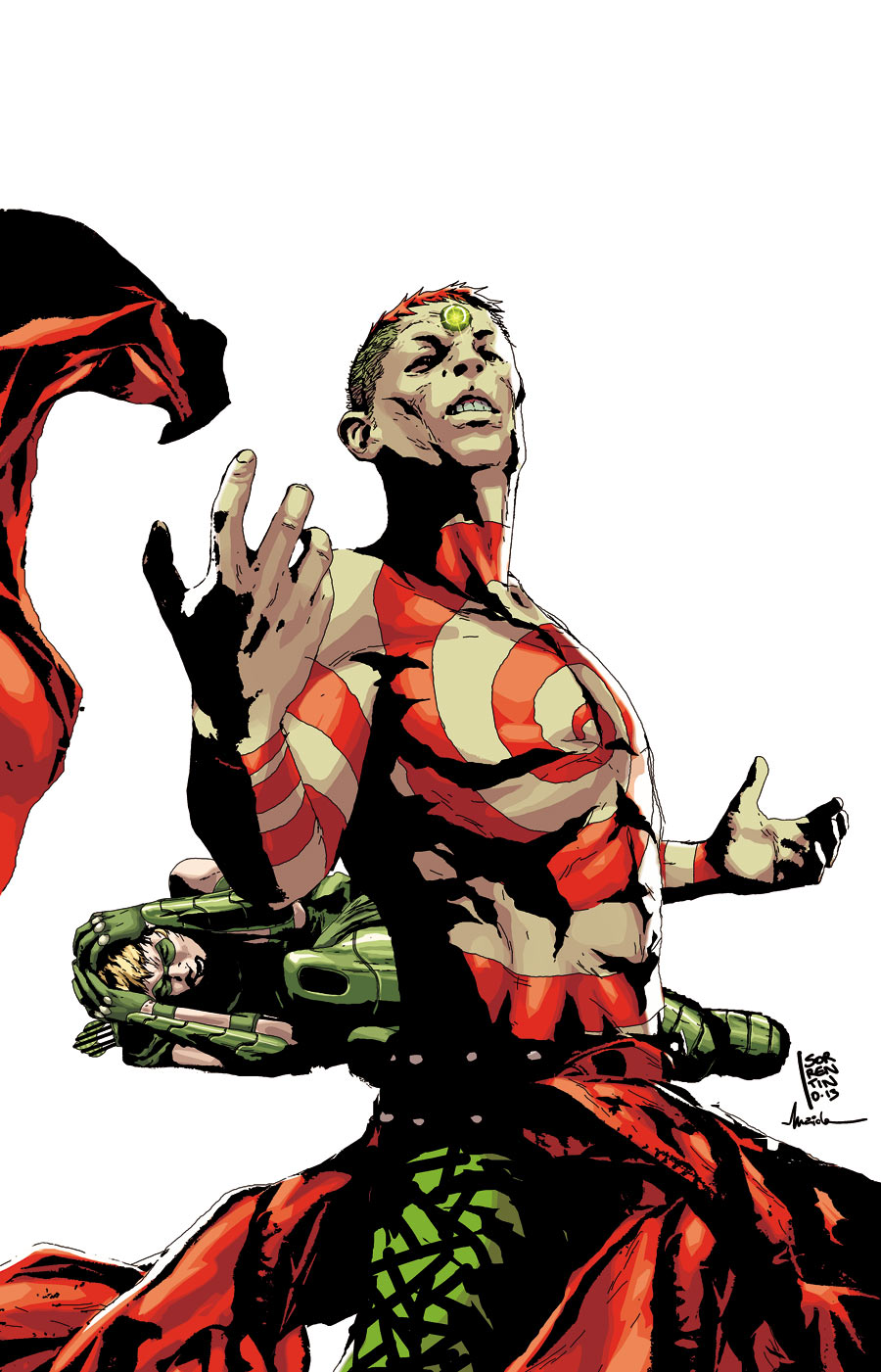
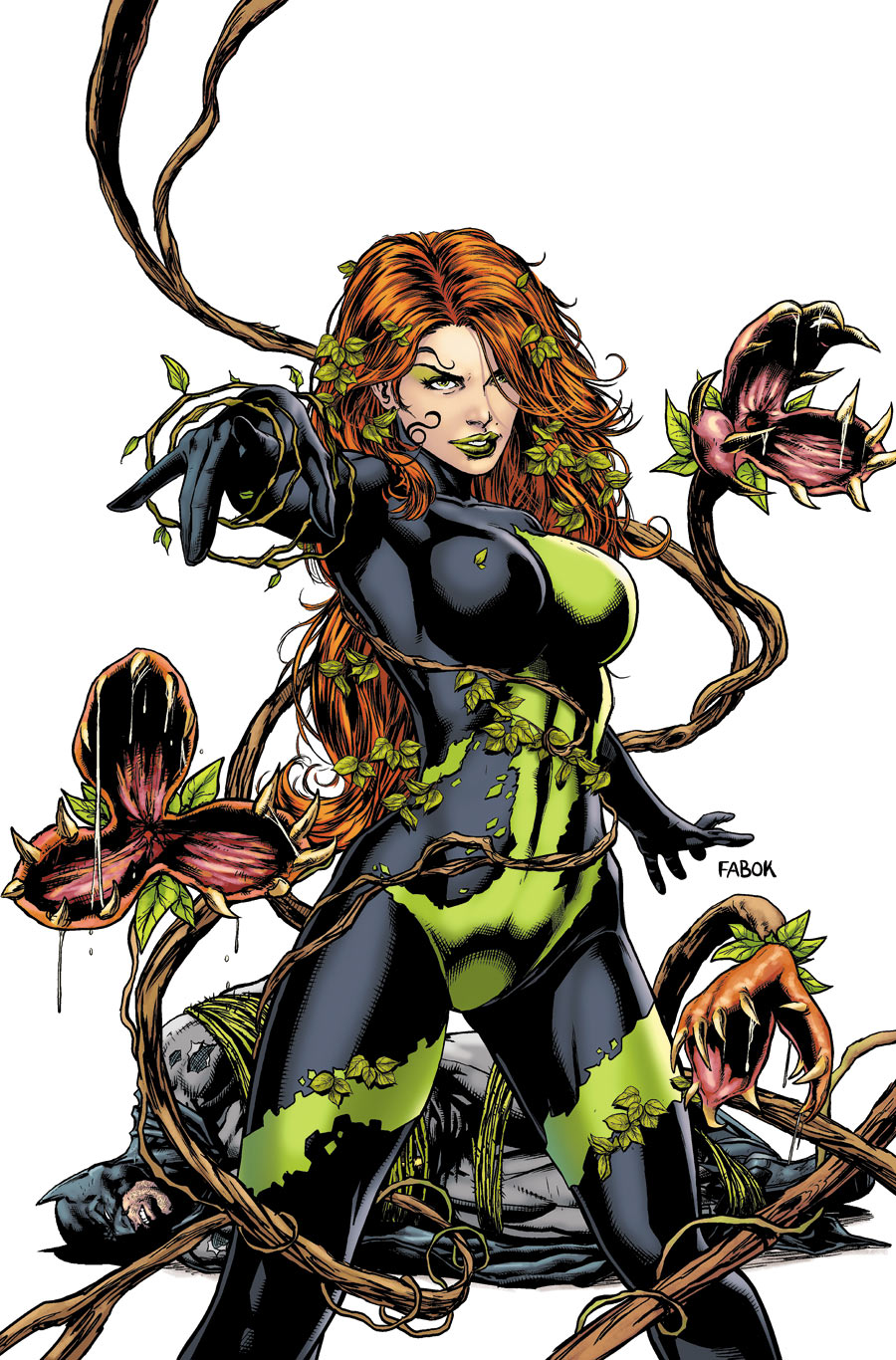
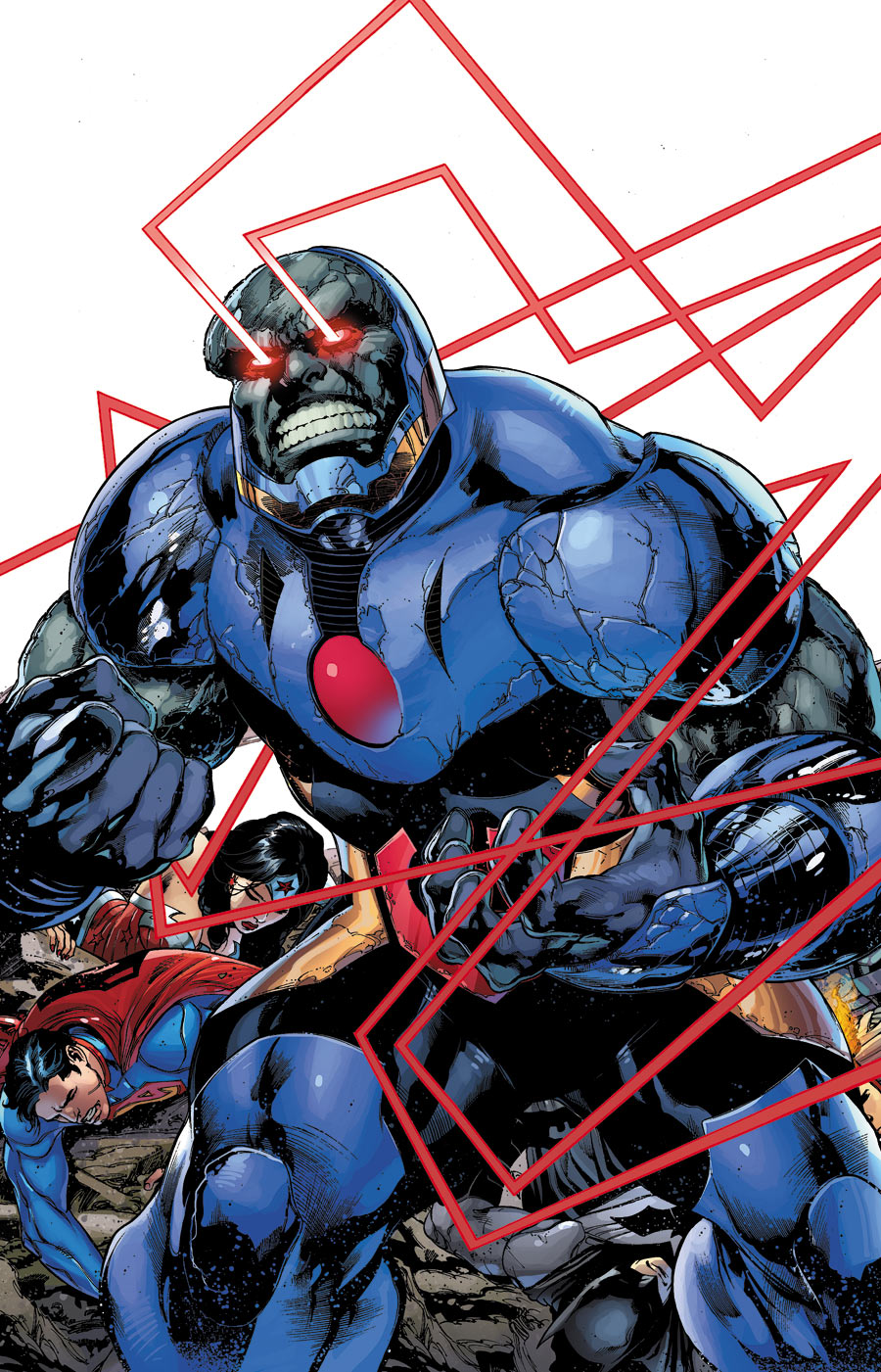


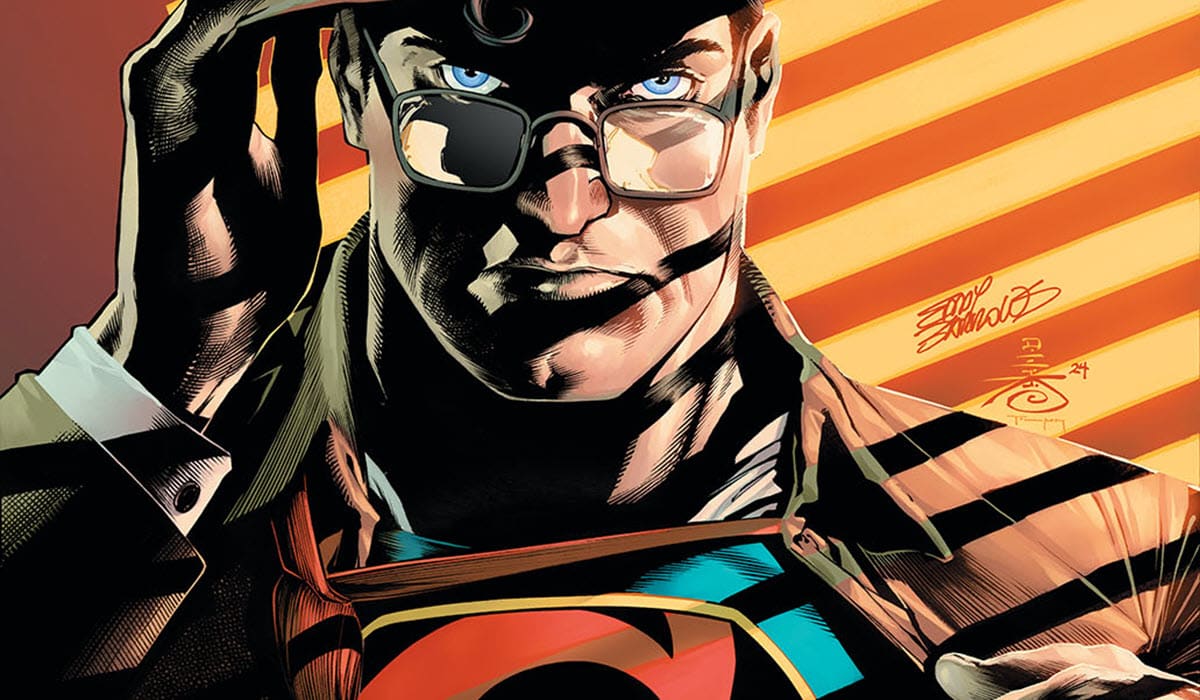



No mention of Kirby in Desaad #1? That elevated it considerably for me.
Oh, so the guy who pulped a story where a cartoon-y Superbaby is put in a microwave (and is unhurt) and also censored an Authority comic with a gay wedding is now putting out stories that mine mass shootings for quick and cheap drama. Good to know.
Grant, when did Levitz censor a gay wedding?
I beg your pardon, Levitz’s censorship of The Authority was more violence-based, instead of focused around the Apollo/Midnighter relationship. Still, this makes his use of a mass shooting even more curious. http://sequart.org/?p=2461
Oh, so the guy who pulped a story where a cartoon-y Superbaby is put in a microwave (and is unhurt) and also censored an Authority comic with a gay wedding is now putting out stories that mine mass shootings for quick and cheap drama. Good to know.
This is blatantly untrue. Millar’s Authority had some violence censored with a red color filter and a panel with the Engineer flipping the bird changed to the British version of it, which has virtually no meaning as an insult in the US. The wedding scene at the end of Millar’s run was not censored.
You can be mad if you want, but you don’t get to make up history to fit your narrative.
“I beg your pardon, Levitz’s censorship of The Authority was more violence-based, instead of focused around the Apollo/Midnighter relationship. ”
—an easier way to say this is:
I was wrong.
Absolutely, I made a mistake. I will never make comments again. Seriously. If you see this name on the comics section for The Beat or anywhere else throw all of this back in my face. PROMISE me you will. Goodbye.
Interesting to hear that Darkseid apparently turned out good. I thought the preview that ran a couple of days ago was terrible. Well, now I’m curious.
Did they not send you Creeper and Deadshot?
>> Oh, so the guy who pulped a story where a cartoon-y Superbaby is put in a microwave (and is unhurt) and…>>
The guy who pulped whatever wasn’t making sure all DC comics were done to his own tastes, he was making executive decisions about what he thought was best for the company, according to his understanding of the market and what his superiors would react to.
If, a few years later, the market has changed, the superiors have changed, and even the guy making the decisions about what’s best for the company has changed, it’s entirely possible that even said former exec will produce material that is not the same as what would have been approved back then.
The only way that the conflict you’re apparently assuming arises is if you assume that all such decisions are entirely personal and are made in a vacuum, so that they’ll prevail eternally, regardless of any external factors.
I don’t think this is the case.
Steve, I think you just showed you care more about the contents of these books than DC does.
Slow clap to Kurt Busiek.
PS. It’s a side point, but MAN do I wish you were writing more Big Two comics these days. Pulled out some of your old Thunderbolts stuff. So much passion, so much fun. Always knew it was going to be QUALITY for 22+ pages when you were involved.
There were two other books! Oh, I’ll have to track them down for next week, sorry!
>>It’s a side point, but MAN do I wish you were writing more Big Two comics these days.>>
Glad you liked ’em! I’ll do my best to get you more stuff to read, but not necessarily from the Big Two.
kdb
about Dasaad : ” it features a sequence about a mass shooting which is in extremely poor taste”
OH PLEEEEESE. It wasn’t in panel, and if you read the TWO FACE issue you will see10 times the GRAPHIC violence. You can tell when a reviewer is just against something and this reviewer seems to be anti -villian month and so is trying to tear at anything.
“No mention of Kirby in Desaad #1? That elevated it considerably for me.” –Rich Johnston
Just to be clear, The New 52 Jack Kirby never created anything that wasn’t WFH.
I just read Deadshot. I am now convinced that the “reviewer” who made the comment about the Desaad comic really just has an issue with Levitz.
@Chris Hero – nail on the head. I just bought a couple of these and browsed the rest. I think DC spent too much time hyping the cover design and nothing on the stories. They’re just villain origin stories, not told in any dynamic, intriguing or suspenseful way, which is a shame. I recently read “Reign of the Superman” so was disappointed how the new Cyborg Superman lacks the heart and purpose of the original. I think it’s too much of a gamble to expect readers to buy these 52 one-shots, when the storytelling and creativity just isn’t there to support them.
I completely agree with you about the Count Vertigo issue…..writing and artwork are phenomenal. Despite any other Creative changes made by DC over the last year, this one saved the Green Arrow title from obscurity.
I completely disagree with you about the Grodd issue…..I thought it proved the point that Grodd will stop at nothing to acheive his goals, despite any and all obstacles. Once acheived, he moves on to bigger and better challenges. HE’S A KING!!! ….and acts exactly like any one ever mentioned in history…..pompous, arrogant, unchanging (unless he decides otherwise).
I thought the Darkseid issue was atrocious. I did enjoy the Two Face issue, but I admit I have never read No Mans Land. All in all I’ve read a few of these villain one shots and they’ve generally been bad.
Comments are closed.